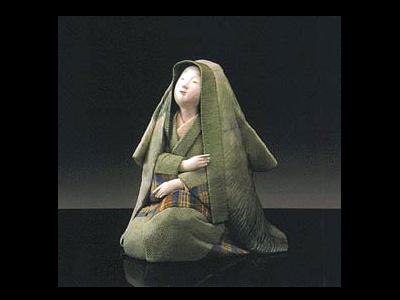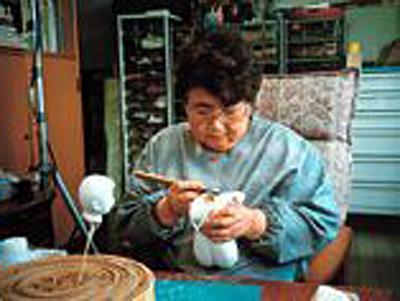Suruga hina dolls are unique dolls made in Shizuoka Pref. The roots of these dolls are traced back to clay dolls known as “neri-tenjin,” which represent the deep respect for Tenjin, which is peculiar to the Suruga district. Tenjin is another name for Sugawara no Michizane, a Heian period (794-1192) scholar and the deity of study. Neru-tenjin dolls are originally all made of clay and not only facial features but also kimono dresses are painted with brushes. In the late Edo period (1063-1868), a neri-tenjin doll with a cloth-made costume began to be produced, which became the origin of the present Suruga hina dolls. In the making of Suruga hina dolls, rice straw is used to form a body, and the breast part is cut at a slant to form a curved line. Different from Kyoto-typed dolls, each part of a Suruga hina doll is made separately by specialist craftsmen. At the present time, a wide selection of dolls is being made including hina dolls, neri-tenjin dolls, warrior dolls, and those for Boys Festival.





















